Clancy Tucker's Blog, page 149
June 21, 2018
22 June 2018 - U.S.A - A WALK DOWN MEMORY LANE
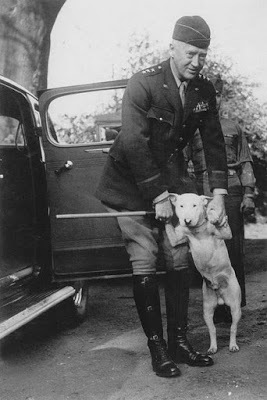
U.S.A - A WALK DOWN MEMORY LANE -
G'day folks,
Welcome to some more snapshots of famous folks; snapshots you may have never seen before. Many of these folks have since left us.
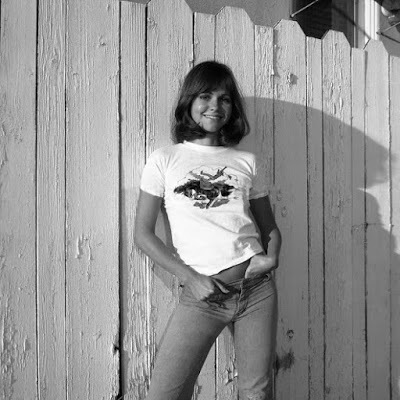

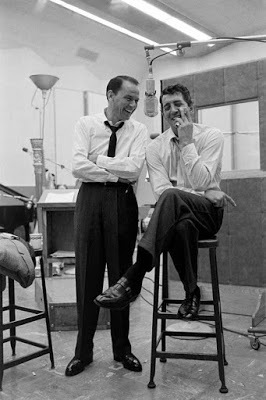
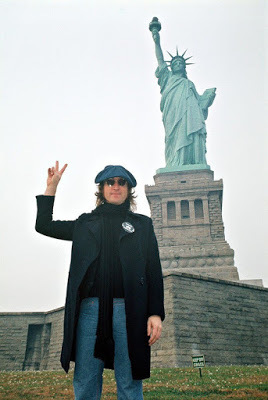
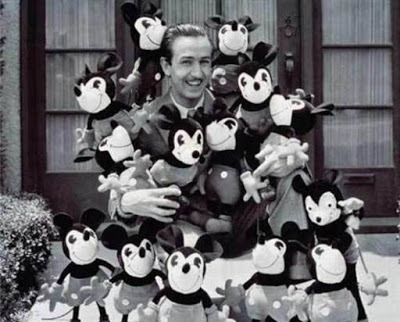
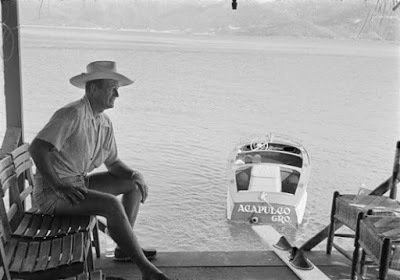
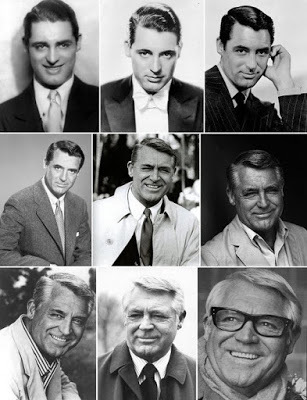
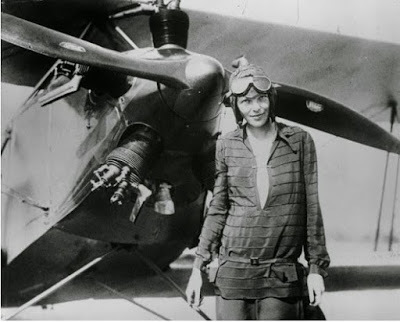
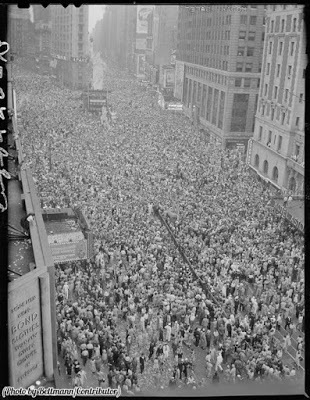
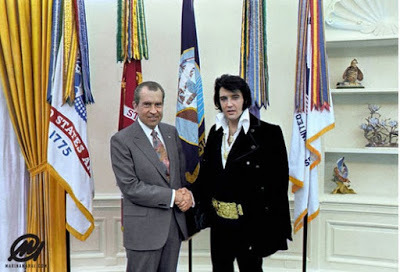
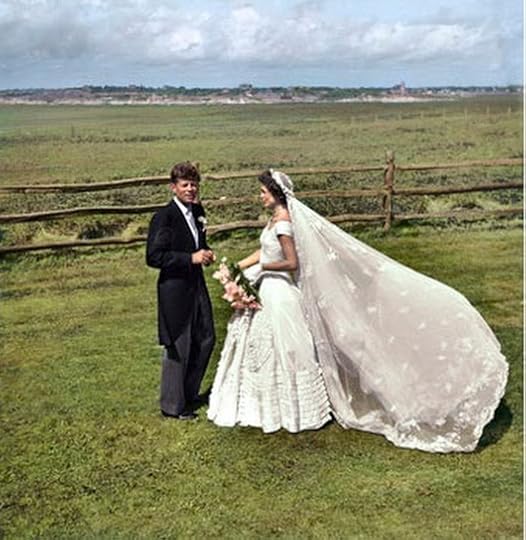



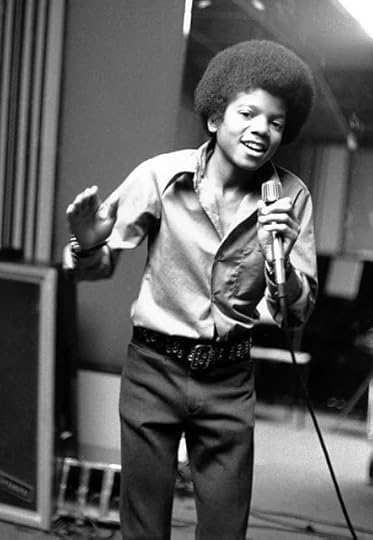


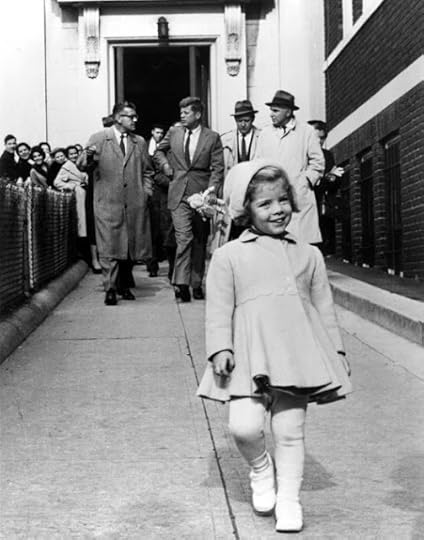

Clancy's comment: Many of those depicted were really cool characters.
I'm ...


Published on June 21, 2018 15:44
June 20, 2018
21 June 2018 - FACTS ABOUT THE KANGAROO
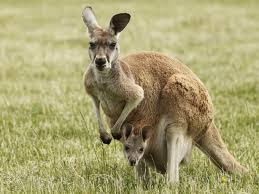
FACTS ABOUT THE KANGAROO
G'day folks,
Here are some interesting facts about one of Australia's most well known animals.
The kangaroo is a marsupial that is indigenous to Australiaand and the Indonesian islandof New Guinea. Although kangaroos are often seen congregating in groups, kangaroos are generally fairly solitary mammalsbut kangaroos are also known for being sociable animalswhen with other kangaroos.
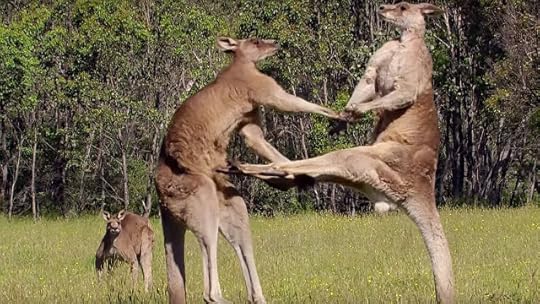
Kangaroos have a deep pouch on their front in which to carry their young. A baby kangaroo is called a joey. Kangaroos eat plants, nuts, berries and insectsthat the kangaroos rummage for in the arid wilderness.
Kangaroos are most well known for their ability to jump a phenomenal distance. The kangaroo is the largest of the marsupials, a groupof animalsthat includes koalasand the common brushtail possum. Marsupials are distinguished by the pouch that these animalshave on their bellies, in which they carry their young.

There are three main speciesof kangaroo in existence today and these are the red kangaroo, which is the largest and most well-known of all the kangaroo species. The Eastern grey kangaroo is known to be the heaviest speciesof kangaroo despite the fact that the red kangaroo is taller. The western grey kangaroo can be found in large numbers and can be anywhere in colourfrom grey to brown. The kangaroo is the national animaland emblem of Australia.

Kangaroos have large, flat feet which the kangaroos use in orderto aid their movement which the kangaroos do by hopping. Despite the fact that kangaroos do not move about in the conventional way, kangaroos can often be seen running at high speeds, generally when the kangaroo is scared or being chased by oncoming predators.
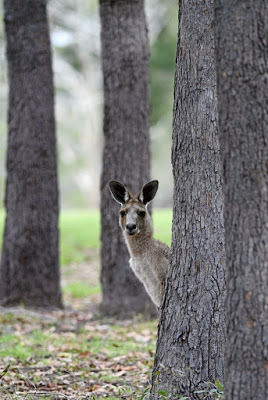
Although kangaroos are not commercially farmed, wild kangaroos are often pursued by humanhunters for sport, meat, fur and when farmers are conserving their grazingland for their sheepand cows. This method of sustainable hunting is said to have more health and environmental benefits than that of sheepand cattle.

The average age of a wild kangaroo tends to be less than 10 years, although some kangaroo individuals in the wild have been known to get closer to 20 years old. Kangaroos generally live to about the age of 23 when the kangaroo is in captivity.
Now, check out this amazing video of the birth of a kangaroo, compliments of National Geographics.
VIDEO: BIRTH OF A KANGAROO

Clancy's comment: It took a long time for Australia to realise that meat from a kangaroo was full of protein, and fat free. I've eaten it many times and love it.
I'm ...


Published on June 20, 2018 14:58
June 19, 2018
20 June 2018 - THE MY LAI MASSACRE – AN ARMY COVER-UP
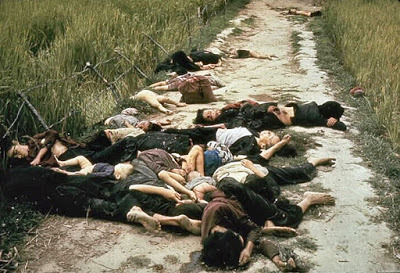
THE MY LAI MASSACRE - AN ARMY COVER-UP -
G'day folks,
I do recall when this happened. The Mỹ Lai Massacre was the Vietnam War mass murder of unarmed Vietnamese civilians by U.S. troops in South Vietnam on 16 March 1968.
In 1968, Ron Ridenhour, an infantryman in Vietnam, wrote a letter to President Nixon detailing the murder of 500 civillians by the U.S. Army in what would come to be known as the My Lai Massacre.
On the morning of March 16, 1968, U.S. Army soldiers entered a Vietnamese hamlet named My Lai 4 on a search-and-destroy mission in a region controlled by Viet Cong forces that the Army referred to as “Pinkville.” The soldiers didn’t encounter any enemy troops. Yet they proceeded to set huts on fire, gang-rape the women, and murder some 500 unarmed civilians including approximately 50 children under the age of four.
On the 50th anniversary of the My Lai massacre, the barbaric act still remains difficult to fathom. The massacre stands among the most infamous of wartime atrocities committed by any U.S. military force.

When news of the massacre finally hit newsstands more than a year and a half after it had occurred, it swiftly became emblematic of the U.S. war effort in Vietnam. Especially in the eyes of the war’s critics, the massacre was proof that America’s moral compass no longer functioned, as well as evidence that the government’s claim of “defending” Southeast Asia from atheistic communist aggression had become a cruel and paradoxical hoax.
The military’s secrecy ultimately compounded the shock of the revelations once they became public. Not only had scores of Army soldiers participated in the wanton murder of defenseless women and children, but the Army’s leadership had seemed to conspire to sweep crimes against humanity under the carpet.
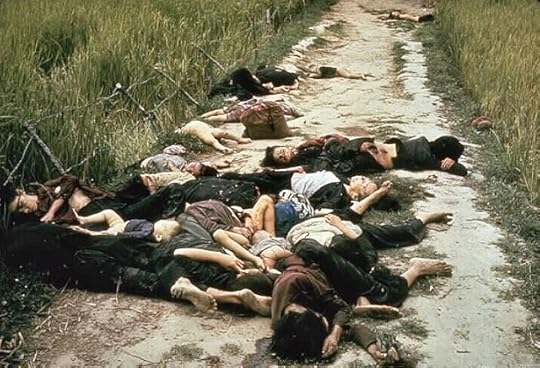
The Tet Offensive that preceded the massacre at My Lai by less than two months led to graphic televised scenes and photographs that gripped the American public day after day. In contrast to the instantaneity of Tet’s news coverage, My Lai triggered a cover up by the Army that served to keep the massacre secret from the American public for a staggering 20 months during an election year. The U.S. military had deceived the public about the course of the war for years, but this was a concerted effort to hide an act of barbarism and turn it into a resounding victory over the Viet Cong.
The atrocity itself was a deeply inhumane act. American soldiers stabbed, clubbed, and carved “C [for Charlie] Company” into the chests of their victims; and herded them into ditches and blew them to bits with grenades. One soldier recalled cutting victims’ throats and chopping off their hands. “A lot of people were doing it and I just followed,” he said. “I lost all sense of direction.”
In his gripping account My Lai: Vietnam, 1968, and the Descent into Darkness, Howard Jones reveals that this collective act of barbarism was far from an aberration by a small group of frightened and confused men, but a predictable result due to the way the war was being waged. The Army had dehumanized the Vietnamese people as “Gooks” and depicted women and children as potentially lethal combatants, while jungle warfare had fostered “an environment in which [U.S. troops] could not be sure who or where the enemy was,” Jones writes.
Members of Charlie Company, which committed the bulk of the atrocities, had seen comrades killed by land mines and sniper fire, even heard one being skinned alive, and in the words of one troop, they had become “leaderless, directionless, armed to the teeth, and making up their own rules…” Their confusion was only bolstered by official military policy. At the time, the combat strategies and tactics in use—including an emphasis on “search-and-destroy” missions and “free-fire zones”—encouraged troops to destroy entire hamlets and villages and defoliate forests. This, in turn, inflated enemy kill rates (the Pentagon’s measure of the war’s progress).
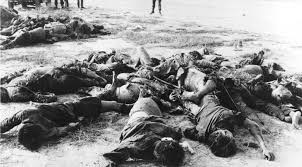
Some men were afraid to speak out about what had happened, and Army officers who heard eyewitness reports of a massacre were quick to discount them. The Army’s Public Information Office issued a press release that informed news coverage, but it was riddled with falsehoods. The Army claimed its troops had killed 128 Viet Cong, even though they had in fact met no resistance and suffered only one self-inflicted wound; Lieutenant Colonel Frank Barker, who helped to oversee the incursion, bragged that “the combat assault went like clockwork,” Jones reports.
Although the public would not find out what happened for nearly two years, word of the atrocity quickly spread among troops in Vietnam. Some American GIs refused to remain silent about the Army’s cover up of the grisly deaths of unarmed women and children at the hands of U.S. soldiers. Helicopter pilot Hugh Thompson, for example, had tried to stop some of the soldiers from massacring civilians during the assault, and he and two others informed commanders about the war crime within hours, to little avail.

Helicopter door gunner, Ronald Ridenhour, who had been told of the My Lai killings by soldiers who had taken part in the slaughter, returned to his home in Phoenix and compiled a dossier of facts about it. On March 18, 1969, almost one year to the day of the massacre, Ridenhour sent a letter to 30 Washington officials detailing the My Lai massacre. Two investigations—one focused on establishing whether a massacre had occurred; the other into a potential cover up by Army brass—were launched.
Soon, freelance reporter Seymour Hersh got a tip that Charlie Company’s Lt. William Calley was being court-martialed on charges that he had killed Vietnamese civilians. Hersh interviewed Calley about his role in the slaughter, but Calley insisted that My Lai had been a fierce firefight with the Viet Cong, not an assault on unarmed villagers. Hersh talked to others who were there, however, and in November 1969 he reported that an unparalleled atrocity had taken place in My Lai in a graphic story that appeared in dozens of newspapers.
The Cleveland Plain Dealer soon published Army photographer Ronald Haeberle’s private photos documenting the slaughter. These first news accounts pricked the nation’s conscience and set off a debate about what had actually happened, what the event said about America’s war effort, and who bore responsibility for the massacre.

More than a dozen military servicemen were eventually charged with crimes, but Calley was the only one who was convicted. In spite of growing opposition to the war, much of the American public remained supportive of its soldiers, and was reluctant to pin the blame on them for simply following the orders of their commanders. This climate made it harder to charge senior military leaders, let alone win convictions in military courtrooms.
Millions of Americans actually considered Calley a “scapegoat” who had been “held responsible for almost a decade of mistakes in Vietnam,” in the words of Alabama congressman Walter Flowers. President Richard Nixon reduced Calley’s sentence to a light punishment—three years of house arrest. The My Lai massacre, the Army’s cover up, and the military courts’ abject failure to bring military leaders and GIs to justice further undermined the faith of some Americans in their political and military institutions.
My Lai didn’t occur in isolation, of course. The U.S. government for years had deceived the public about the war’s progress, and dogged investigative reporting including publication of the Pentagon Papers were beginning to reveal the level of official deception. After the Tet Offensive in early 1968, a majority of the American public came to view the war as a mistake, and the subsequent cover up of My Lai served to deepen people’s despair that the war could ever be won. The massacre also raised big questions about whether the United States was capable of defending freedom, democracy, and human rights in far-flung places.
Rather than liberating concentration camps and promoting universal notions of human dignity, the United States now seemed to some Americans to have been complicit in covering up war crimes. At the same time, Americans who still supported the war in 1969 thought that Calley was just carrying out orders and had become the fall guy for higher-ups looking to take the spotlight off their own Vietnam-era blunders. Finally, My Lai creating an unflattering portrait of GIs, and led to the shoddy treatment some returning soldiers received when they rotated back home from Vietnam.

The My Lai massacre and the Army’s cover up are a particularly dark moment in the history of modern America. Had the Army taken reports of atrocities seriously from day one; had it launched an investigation and made the findings public, perhaps the country would have had more faith in its institutions. Although the system ruptured in horrific ways during the assault on My Lai, others might have seen it working by holding those responsible for the crimes accountable. That’s not the way the aftermath transpired, and as a result, the legacy of the massacre remains even more haunting than it might have been.

Clancy's comment: All wars suck, but they suck even harder when people who should know better commit atrocities of this nature. What a bloody disgrace. Shame on them all, especially on the senior military and politicians who turned a blind eye.
But, praise to those few who stood up and said something. That takes real courage.
I'm ...
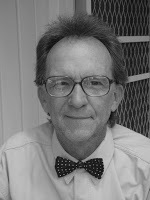
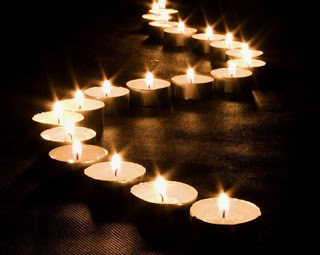
REST IN PEACE
Published on June 19, 2018 14:30
June 18, 2018
19 June 2018 - A COLLECTION OF HUMOROUS & INSPIRING QUOTES

A COLLECTION OF HUMOROUS
& INSPIRING QUOTES
G'day folks,
We all need to smile, especially in this harsh world. Well, here are some cartoons and quotes that might make you chuckle.
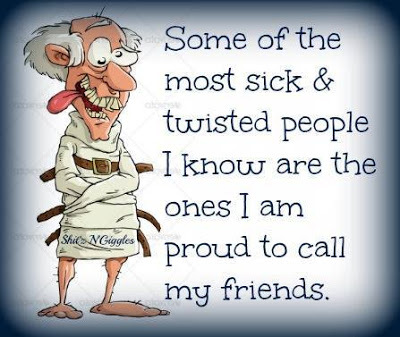

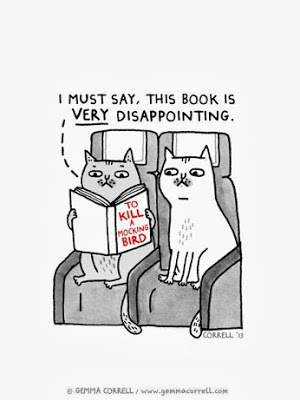
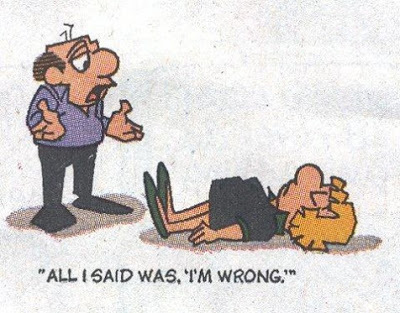


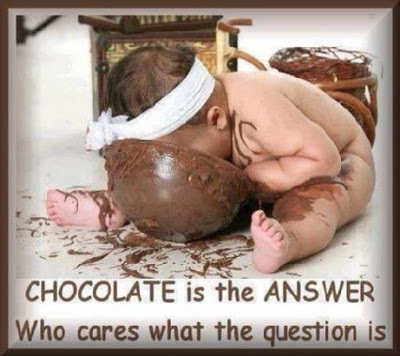



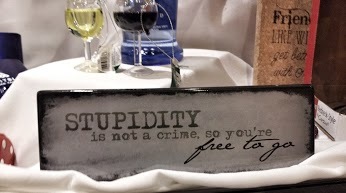



Clancy's comment: I'm sure some of these resonated with all serious writers and creative people. Dare to be different.
I'm ...
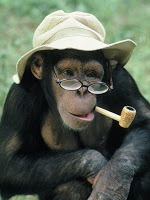

Published on June 18, 2018 15:11
June 17, 2018
18 June 2018 - KATHERINE LANGFORD - AUSSIE ACTRESS

KATHERINE LANGFORD - AUSSIE ACTRESS -
G'day folks,
Katherine Langford is an Australian actress best known for her starring role in the Netflix series '13 Reasons Why,' about a high school teen who commits suicide.
Who Is Katherine Langford?
Katherine Langford was born in Perth, Australia, on April 29, 1996, but she became a star in America playing a troubled high school teen named Hannah Baker in the critically acclaimed Netflix series 13 Reasons Why starting in 2017.
A Golden Globe Nom For Her Very First Acting Job
Except for a few student films she describes as “horrendous,” Langford had never acted professionally at all until she won the role in 13 Reasons Why when she was barely 20.
And yet, the role of Hannah earned her a Golden Globe nomination for Best Performance by an Actress in a Television Series - Drama (she lost to Elisabeth Moss, who won for The Handmaid’s Tale on Hulu, at the 2018 Golden Globes in January 2018).

‘13 Reasons Why’ Adapted from a 2007 novel of the same name by Jay Asher, 13 Reasons Why is about a high school teen who commits suicide – what led up to it, and what happened afterward. Like the book, the TV show is centered on a collection of audiocassettes the dead girl left behind on which she recorded an “audio diary” detailing 13 reasons why she killed herself.
The show’s episodes were each based on a single side of a cassette. For example, Episode One was titled “Tape 1, Side A.”
13 Reasons Why Ignites Conversation, Controversy About Teen Suicide
13 Reasons Why became a sensation and so did Langford. It has been referred to as the “most tweeted-about show of 2017” – a milestone it reportedly earned within a month of its premiere in March 2017.
The show ignited an increase in discussions about teen suicides, with on-line searches on the subject reportedly “skyrocketing” after the show’s premiere. But the show was also controversial for the graphic nature of some of its contents, including two rape scenes and the scene of Hannah’s suicide in which she slit her wrists in a bathtub.
“When you make a show like this, we expected controversy,” Langford said in an interview with Variety. “Overall, I think it was a good thing. You need there to be opinions in order for there to be discussions, and that’s really what the show is about — talking about issues that are taboo or that people wouldn’t usually discuss with parents or teachers.”
At least one distraught father blamed 13 Reasons Why for the suicide of his 15-year-old daughter. He said his daughter binge-watched the show just before killing herself.

Langford Pursues Acting After Lady Gaga Concert
Langford, formerly a high school swimmer, said she was inspired at age 16 to take up acting after seeing Lady Gaga in concert. “It was like a spiritual experience,” Langford told Entertainment Weekly. “I was so moved by her performance that I went home and that week I taught myself how to play piano.”
Langford took her first acting classes in Perth when she was 17. She concentrated on acting classes in her senior year in high school, after which she went on auditions (including auditions for parts in two network pilots that she didn’t get). A Successful Audition for ’13 Reasons Why’ Via Videotape and Skype Living in Perth and unemployed, she then heard about auditions for 13 Reasons Whyand sent a videotape (something actors from abroad sometimes do when they cannot audition in person). She had a follow-up audition via Skype and won the part.
“It was tricky and very, very challenging casting Hannah,” said the show’s creator, Brian Yorkey. “We saw many talented, wonderful actresses, but we just needed the person that brought that very special luminosity. We needed that, and that came via a self-tape from Perth, Australia, in the form of Katherine Langford.”

Selena Gomez Persuades Langford to Go on Instagram As of January 2018, Langford had 8.2 million followers on Instagram (@KatherineLangford).
In the wake of the first season of 13 Reasons Why, Langford was reluctant at first to put herself out there on social media. But it was Selena Gomez who persuaded Langford to make her Instagram account public. Gomez is one of the executive producers on 13 Reasons Why.
“It was a bit of a big decision for me actually, because I wanted to be an actor purely for the acting work,” Langford said in an interview with TheLast-magazine.com. “I have never been attracted to increasing my popularity or hireability by being on Instagram.
“I didn’t want to make myself a consumable product. I just wanted to be able to do my job and then disappear. Selena pointed out that the show is targeting young adults like me and that [social media] is a good medium to talk directly with those who relate to my character, Hannah.”
Langford and Co-star Dylan Minette are NOT Dating
Though rumors have persisted that Langford is dating (or has dated) Dylan Minette, her co-star and on-screen boyfriend on 13 Reasons Why, the rumors are not true (or at least they have been denied by both Langford and Minette). As of January 2018, she was not reportedly dating anyone.

Two New Movies in 2018 Langford’s newfound fame earned her roles in at least three new movies. Two of them – The Misguided and Love, Simon – were due to be released in 2018. A third movie, Spontaneous, is in pre-production. The second season of 13 Reasons Why is also expected to premiere in 2018.

Clancy's comment: I have not seen the film in question, but I ask why was the subject within the film considered controversial. Youth suicide should be on everyone's lips.
I'm ...
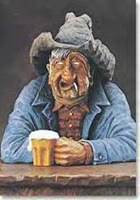

Published on June 17, 2018 15:26
June 16, 2018
17 June 2018 - TEDDY ROOSEVELT’S ATTEMPT TO CHANGE SPELLING
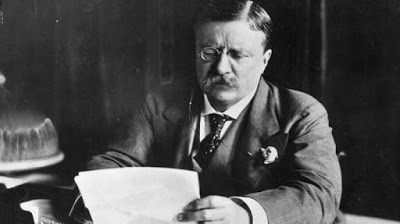
TEDDY ROOSEVELT’S ATTEMPT TO CHANGE SPELLING
G'day folks,
This article taught me a fair bit about something that has always aggravated me - WHY IS AMERICAN ENGLISH DIFFERENT TO REAL ENGLISH? Theodore Roosevelt Jr. was an American statesman and writer who served as the 26th President of the United States from 1901 to 1909.
In August 1906, President Theodore Roosevelt issued an order from his summer residence in Oyster Bay, New York, that would soon be the talk of Washington—and the world beyond.

Addressing himself to the government printer, Roosevelt decreed that all documents issued by the White Houseshould now follow the spellings advocated by an organization known as the Simplified Spelling Board.
Launched the previous March and financed by the steel baron Andrew Carnegie, the board wanted to strip the American language of its antiquated British baggage and create a clean and modern version for the 20th century.
Carnegie, who’d immigrated to the United States as a teenager with little formal education, had high hopes for the project. “Mr. Carnegie has long been convinced that English might be made the world language of the future, and thus one of the influences leading to universal peace,” the New York Times reported. “He believes that the chief obstacle to its speedy adoption is to be found in its contradictory and difficult spelling.”
At the time, written German, which had been simplified in 1901, seemed poised to become the “world language of the future”—a development that neither Carnegie nor Roosevelt, both intensely competitive men, could possibly have welcomed.
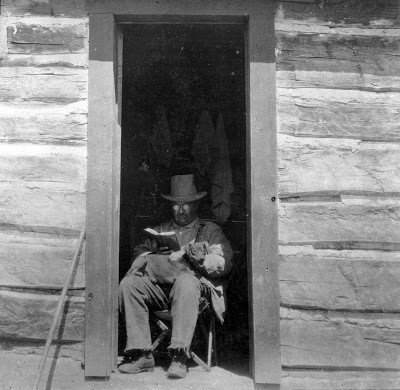
Carnegie recruited a long list of luminaries to the cause, including the writer Mark Twain, the philosopher William James, Melvil Dewey of Dewey Decimal System fame, and the presidents of Columbia and Stanford universities, among others. If Carnegie’s “universal peace” seemed like a grandiose goal, they could point to other, more basic benefits. Spelling would be easier to teach in schools, possibly shaving a year or more off the curriculum, educators said. Business correspondence would be faster and cheaper to handle.
Publishers could save on typesetting, ink, and paper costs.
In a September 1906 speech, Twain argued that the reforms would also help new immigrants assimilate. Traditional spelling, he maintained, “keeps them back and damages their citizenship for years until they learn to spell the language, if they ever do learn.”
As a first step, the board published a list of suggested substitutes for 300 words whose spelling it considered archaic. For example, it proposed that “although” be shortened to “altho,” “fixed” become “fixt,” and “thorough” be traded in for “thoro.”
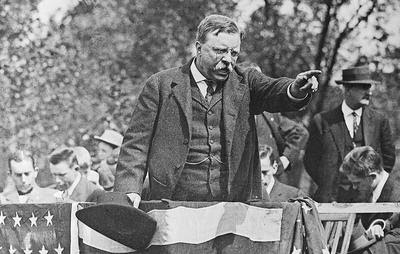
Roosevelt forwarded the list to the government printer, with his official blessing. The 26th president was so “thoroly” convinced of the idea’s merits that he didn’t realize the controversy he was about to spark.
A Man of Words—and Lots of Them
Roosevelt’s obsession with words wouldn’t have been a total surprise to Americans of the day. Despite his popular image as a hard-charging soldier, big-game hunter, jungle explorer, and all-around outdoorsy he-man, he was also one of the nation’s most literate presidents. He wrote more than 30 books throughout his life and was a voracious reader as well, reportedly averaging a book a day.
But the reaction to his spelling move was swift and mostly negative, even though many of the words on the list were already in wide use, such “honor” instead of “honour” and “check” in place of “cheque.” The New York Times, in fact, calculated that at least 131 of the 300 simplified spellings appeared regularly in its own pages.
That seemed to make little difference, though. “Had President Roosevelt declared war against Germany, he could not have caused much more agitation in Washington,” the Washington Times reported.
“Of all President Roosevelt’s moves to stir up the animals,” the Washington Evening Star wrote a week after the order, simplified spelling seemed to strike an unusually sensitive nerve. “Abroad it has particularly aroused the latent animosity of the English,” the paper noted.
Indeed, barely a day after Roosevelt’s announcement, the New York Times reported that, “President Roosevelt is the laughing stock of literary London,” adding that newspaper writers there were now simplifying his surname, referring to him as Rusvelt and Ruzvelt, while Carnegie was caricatured as Andru Karnegi and Karnege. (American papers also had their fun with the men’s names. The Baltimore Sunasked whether the president would start spelling his name Rusevelt or “get down to the fact and spell it Butt-in-sky?”)
Another report summed up the reaction across England: “Mr. Roosevelt, heretofore regarded as only a little lower than the angels, is now characterized as whimsical, silly, headstrong, and despotic.”
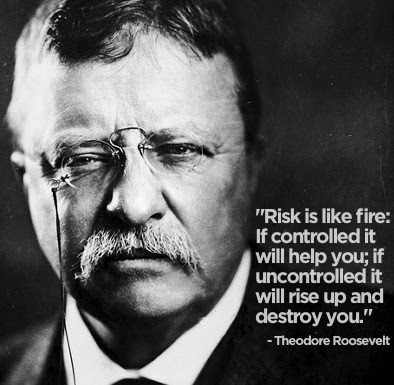
Congress Cries Foul
Nowhere was the reaction more negative than in the U.S. Congress. where many members were irritated that Roosevelt had bypassed them.
Roosevelt, meanwhile, attempted to calm the spelling storm. In a letter to the government printer, he characterized his order as merely an experiment, saying that the American public would ultimately decide its fate. “If the slight changes in the spelling of the three hundred words proposed wholly or partially meet popular approval, then the changes will become permanent without any reference to what public officials or individual private citizens may feel; if they do not ultimately meet with popular approval they will be dropt, and that is all there is about it,” he wrote, managing to sneak in at least one word from the beleaguered list.
The controversy seemed to have subsided, when, in October 1906, the U.S. Supreme Courtunexpectedly got involved. Reviewing a government brief that had been prepared in accordance with Roosevelt’s order, Chief Justice Melville Fuller expressed his displeasure at seeing the word “thru” substituted for “through.” The government’s lawyer assured the court that it would never happen again.
The next month, a subcommittee of the House Committee on Appropriations, noticing that the draft of a recent bill had been printed with simplified spellings, announced that it would be calling on the public printer to explain himself. Two weeks later the full committee weighed in, adding a provision to the bill that, “Hereafter in printing documents authorized by law or ordered by Congress… the Government Printing Office shall follow the rules of orthography established by Webster’s or other generally accepted dictionaries of the English language.”
The entire House took up the matter the following week, debating the pros and (mostly) cons of simplified spelling for three hours. While Roosevelt’s reforms had a few supporters, the prevailing view was that he had overstepped his authority. “Some time before very long, the people of the United States are going to insist on having a President that will attend to his own business,” one Congressman suggested.
Two days later, on December 12, 1906, the House voted 142 to 25 to withhold funding for the printing of any government document that deviated from conventional spelling. One impassioned foe declared, “If the President can change 300 words, he can change the spelling of 300,000.”
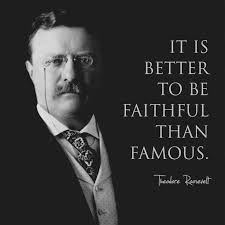
Roosevelt Retreats
By now Roosevelt realized that he had really “stept” in it. The following day, he declared surrender, vowing to abandon the effort and admitting in a letter to a fellow advocate that it was “worse than useless to go into an undignified contest when I was beaten.”
Though the New York Times praised the president for his grace in defeat, he might have had a more pragmatic reason for backing down. The next presidential election was coming up in 1908, and simplified spelling had the potential to be a contentious issue in the campaign. As the Boston Transcript put it, “Unable to excoriate Roosevelt for squelching the coal strike, beginning work on the Panama Canal, stopping the Russo-Japanese War, cleaning up the packing houses, and irritating the trusts, [Roosevelt’s opponents] will denounce him with lurid frenzy for tampering with the spelling book.”
Mark Twain also took note of the over-the-top reaction to Roosevelt’s fairly modest proposal. In dinner speech honoring Andrew Carnegie a year later, he joked that, “Simplified spelling brought about sun-spots, the San Francisco earthquake, and the recent business depression, which we would never have had if spelling had been left all alone.”
From its hopeful start to ignominious finish, Roosevelt’s initiative lasted barely four months. While it may have been a failure at the time, quite a few of its recommendations have long since come to pass. Although we haven’t adopted “kist” instead of “kissed” or “rime” in favor of “rhyme,” numerous words on the list are now in common use: “clue” (not “clew”), “draft” (not “daught”), “jail” (not “gaol”), “labor” (not “labour”), and many others.
Americans today might rightly wonder what all the clamor (not “clamour”) was about.

Clancy's comment: English is English - not American. Sadly, this is an example of where society has dropped its values, and most modern dictionaries will often give you an 'either / or' for a word. Like: flavour / flavor, or colour / color, or centre / center etc etc.
I'm ...


Published on June 16, 2018 15:36
June 15, 2018
16 June 2018 - LOST ART OF THE CUTAWAY

LOST ART OF THE CUTAWAY
G'day folks,
Do you recall these? I sure do.
I could say, that as a kid, I used to love looking at cutaway illustrations, but the thing is: I still think they’re just the greatest thing ever. With cutaway art, you get to examine and explore miniature hidden worlds behind-the-scenes and under an x-ray. The best stuff surely came out of the mid twentieth century, a golden age of illustration that generated a voracious public demand for new graphic art in magazines and periodicals. Fast-forward to the age of computer graphics and the cutaway has lost its way; lost its charm. But today, I found some examples of the good stuff to gawk at.
While many of the great cutaway artists are sadly forgotten or unknown, if there’s one name to remember, it’s probably Frank Soltesz , the “King of Cutaway Drawings”. He pretty much defined the look of commercial illustration in the United States between the 1930s and 1960s, so this might be a good place to start.
Check out these pearlers ...
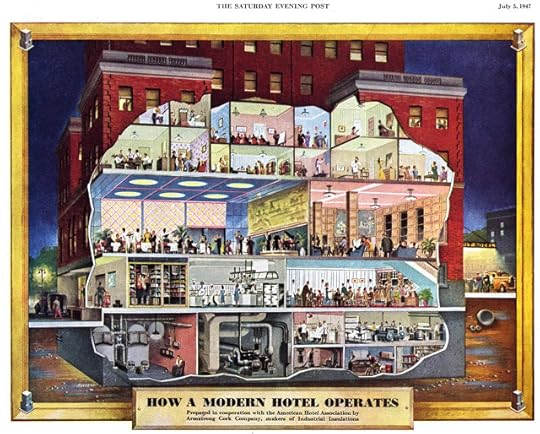











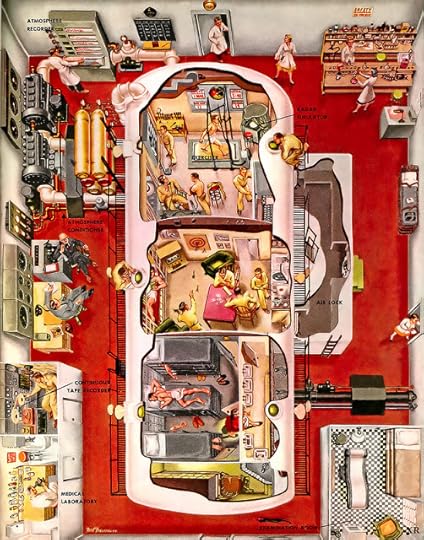

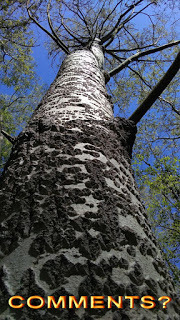
Clancy's comment: So clever. Love them, and it's a shame they do not exist today. Kids would find them enchanting, and they would enhance their learning.
I'm ...


Published on June 15, 2018 14:38
June 14, 2018
15 June 2018 - KUDZU - THE VINE THAT ATE THE SOUTH
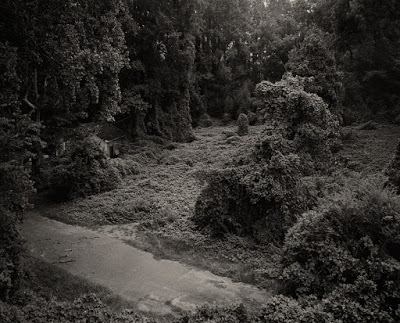
KUDZU - THE VINE THAT ATE THE SOUTH -
G'day folks,
N o really, that’s its nickname, “the vine that ate the South“; Alabama, Mississippi, North Carolina, Georgia, Tennessee and Florida most notably have been swallowed up by the invader so far. Kudzu is known as the most serious and aggressive invasive plant in the United States, spreading in the southern states at a rate of 150,000 acres a year, thirty centimeters a day, swallowing everything in its path, destroying power lines, buildings, and killing native vegetation in the process.
Swedish photographer Helene Schmitz has captured the beautiful but dangerous phenomenon. She calls it the Kudzu Project .
Now, check out these photographs of this invasive plant.



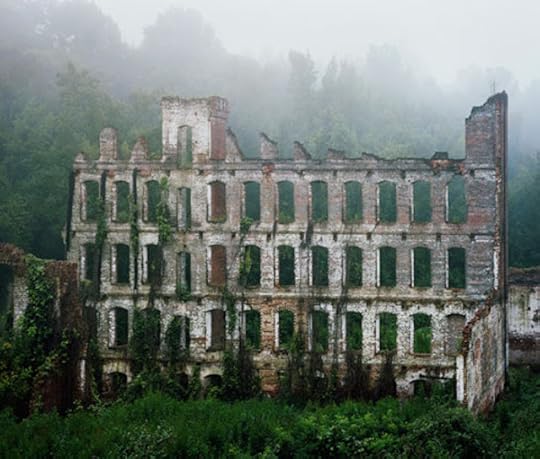
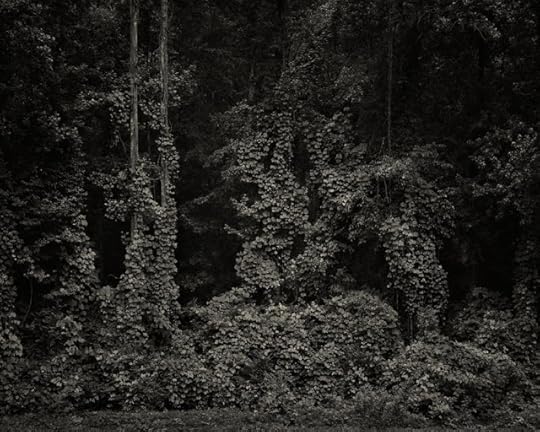





Clancy's comment: Wow. It really looks quite beautiful, but if up close and personal, you wouldn't want to stand still for long.
I'm ...

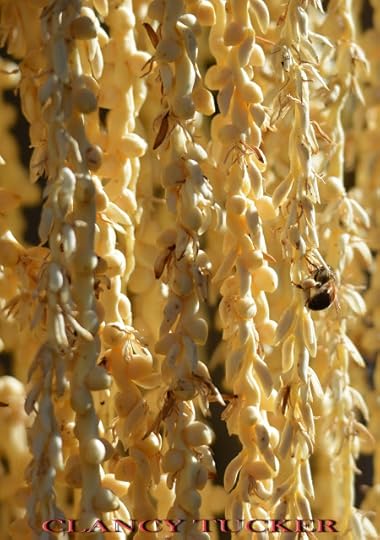
Published on June 14, 2018 15:14
June 13, 2018
14 June 2018 - INTERESTING FACTS ABOUT THE JACKAL

INTERESTING FACTS ABOUT THE JACKAL
G'day folks,
I love the name of this creature, and it certainly conjures up memories of a top book that includes its name. Jackals are medium-sized omnivorous mammals of the genus Canis, which also includes wolves, coyotes and the domestic dog.
The jackal is a medium sized member of the dogfamily, originally found in Africa, Asiaand southeast Europe. There are four main speciesof jackal with these jackal speciesbeing the golden jackal, the side-striped jackal, the black-backed jackal and the Ethiopian wolfjackal. The golden jackal is the most northernly speciesof jackal and can be found as far east as Burma in Southeast Asia.
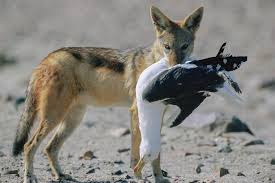
Jackals are generally found in packs of roughly between 10 and 30 jackal individuals. Jackals use their large groupnumbers to their advantage and work together in a similar way to a wolfpack to both occasionally hunt for food but more so that the jackals can protect one another.
Jackals are small canines that have adapted to hunting small mammals, birdsand reptiles.Some speciesof jackal have even been known to eat poisonous snakes.Jackals are carnivorous mammalsand jackals will often scavenge the remains of kills made by other larger predators.

The jackal is a nocturnalmammalthat can easily maintain speeds of 16km an hour for long periods of time. Although the jackal belongs to a jackal pack, jackals often prefer to hunt alone or with only one other jackal. This means that the jackals tend to have a higher chance of ambushing their preyas if the jackals regularly hunted in large groups, the jackals would have less success in being stealthy and silent.
Although the majority of the dietof the jackal is made up of meat, many jackal individuals (particularly those jackals living in the tropics of Southeast Asia) will often eat plant matter if no meat can be found.
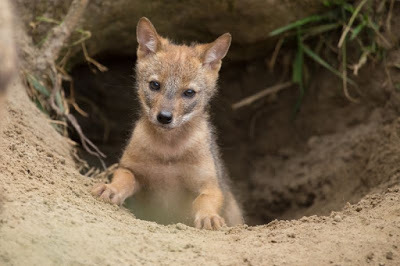
Jackals are very territorial animalsand jackals have no hesitation in defending their marked territory. Jackals have a wide range of vocal sounds that are specific to each jackal familymeaning that is rare for families of competing jackals to come into accidental contact with one another.
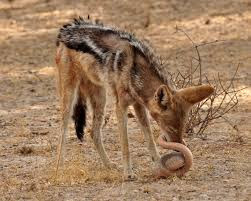
Jackals inhabit crevices in rocks and dens made by other animalsin orderto keep the jackals cool while they sleep. Although many jackal individuals live a nocturnalexistence, particularly those jackals that inhabit areas close to humans, some jackals in more remote areas are slightly more diurnaland will be out hunting during the cooler times of the day.

Clancy's comment: Interesting that each family has its own specific vocal sounds.
I'm ...
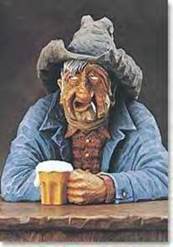

Published on June 13, 2018 15:39
June 12, 2018
13 June 2018 - WELCOME TO POSSUM TROT, CALIFORNIA – A LABOUR OF LOVE
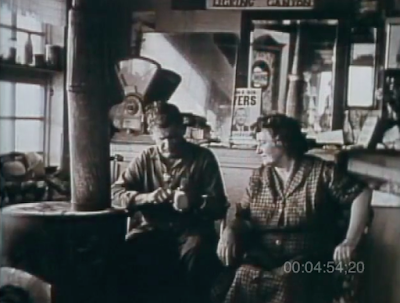
WELCOME TO POSSUM TROT, CALIFORNIA- A LABOUR OF LOVE -
G'day folks,
Well, here is a story about two very dedicated people. W elcome to Possum Trot, California. Human population: 2. Doll population: 80.
For decades, its human residents were Calvin Black and his wife Ruby, who moved out to the Mojave Desert in 1953, bought some land off of Ghost town rd. (an actual road that still exists), and proclaimed it “Possum Trot.” Over the course of 20-years, the Blacks populated the makeshift village with their handmade dolls and folk-art attractions.

By the 1970s, the town boasted a train, a totem pole, stagecoaches, a merry-go-round, and a theatre for the spectacular main attraction, “The Fantasy Doll Show.”
Initially, Possum Trot was just another rock souvenir shop by the side of the road. Neither Calvin nor Ruby had received a formal education, but Calvin’s creativity blossomed in the desert. He began painting tongue-in-cheek signs (i.e. “beautiful dolls of the desert wasteland,” and “we don’t know where ma is but we got pop on ice”. ) Some made some pretty poignant social commentaries:

As a resourceful inventor, Calvin used what he had. In this case, that meant harnessing the desert wind to power his creations. It was an environmentally friendly move as well:
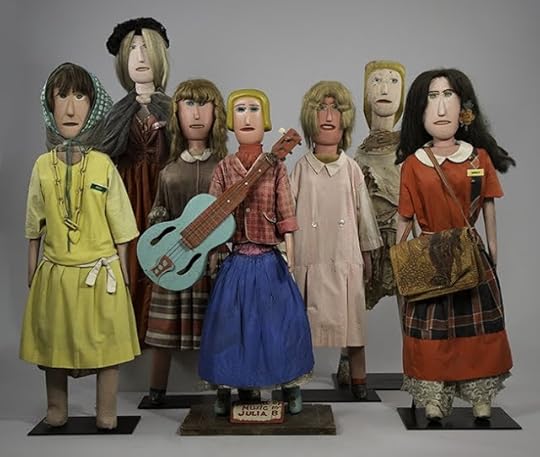
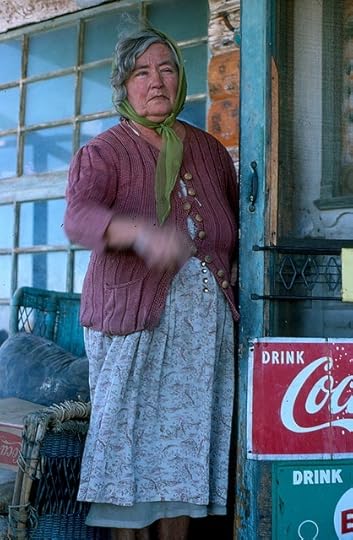
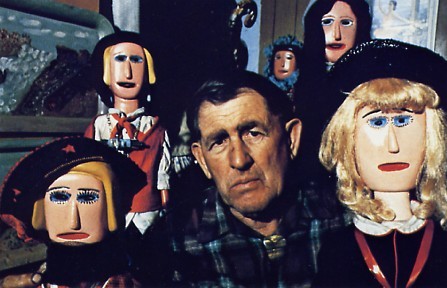
Calvin soon began carving dolls out of found objects like telephone polls that had been damaged by cars from roadside accidents. He even learned how to wire speakers into the 3-4 ft. tall dolls to project his own falsetto singing voice from their mouths.
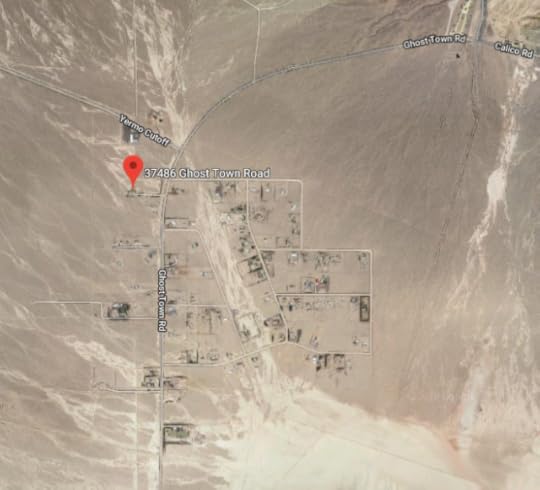
In the 1970s, documentary filmmakers Allie Light and Iriving Saraf stumbled across Possum Trot and created a 28-minute film about the site (released in 1977). They were lucky enough to interview Ruby, who looked after Possum Trot’s attractions after her husband’s death in 1972, and up until her own in 1980, with the utmost diligence:

The film treads lightly, and with a sensitive eye, into Calvin and Ruby’s world. By its end, you’re head over heels for the couple who wanted nothing more than to bring joy to the passer-byes on Ghost town rd. “I’m happy to say that I’ve made thousands, and thousands, and thousands of people happy,” Calvin says in a sound-clip taken from a previous interview in the film, “As long as I can do that, money don’t mean a thing to me.”
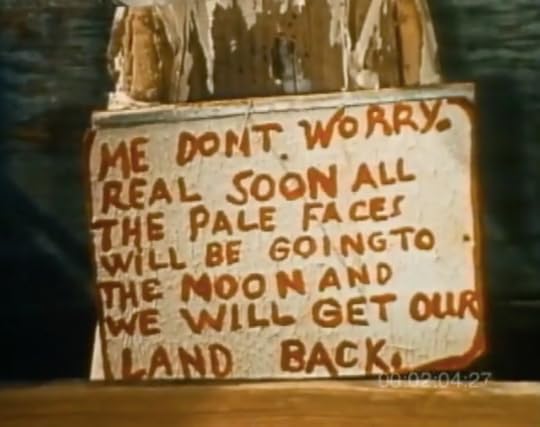

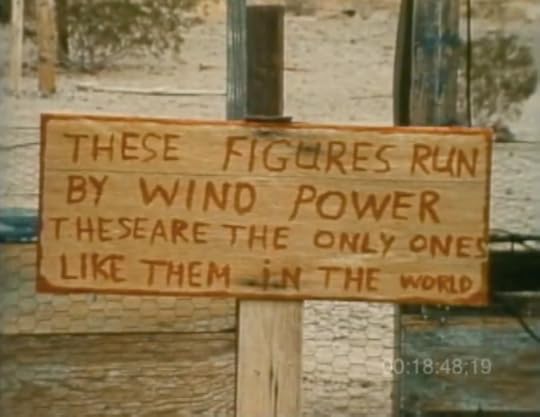
Luckily, the Blacks’ creations were saved by various collectors of outsider folk art, and in 2007, a red-haired doll named “Gypsy Wheel” even sold for $82,500 at auction. You can also visit the dolls at the Milwaukee Art Museum, The Museum of American Folk Art, and the New Museum in New York.

Clancy's comment: And, they were together for 39 years. That is some feat by modern standards.
I'm ....


Published on June 12, 2018 13:39



